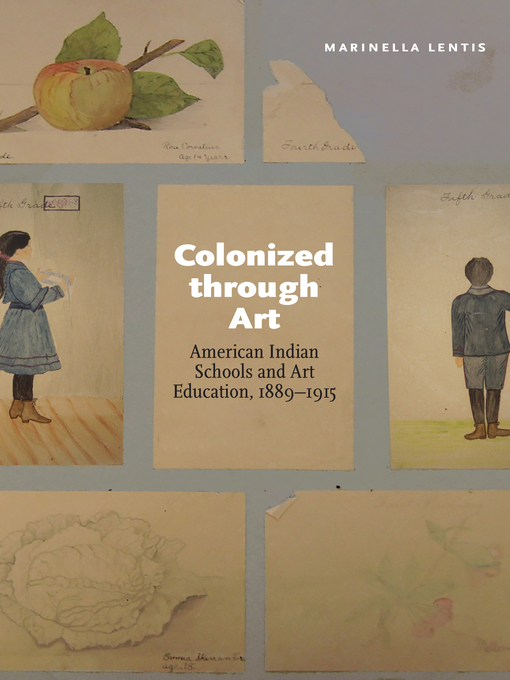Colonized through Art
American Indian Schools and Art Education, 1889–1915
1 of 1 copy available
1 of 1 copy available
Focusing on the Albuquerque Indian School in New Mexico, the Sherman Institute in Riverside, California, and the world's fairs and local community exhibitions, Marinella Lentis examines how the U.S. government's solution to the "Indian problem" at the end of the nineteenth century emphasized education and assimilation. Educational theories at the time viewed art as the foundation of morality and as a way to promote virtues and personal improvement. These theories made the subject of art a natural tool for policy makers and educators to use in achieving their assimilationist goals of turning student "savages" into civilized men and women. Despite such educational regimes for students, however, indigenous ideas about art oftentimes emerged "from below," particularly from well-known art teachers such as Arizona Swayney and Angel DeCora.
Colonized through Art explores how American Indian schools taught children to abandon their cultural heritage and produce artificially "native" crafts that were exhibited at local and international fairs. The purchase of these crafts by the general public turned students' work into commodities and schools into factories.
-
Creators
-
Publisher
-
Release date
August 1, 2017 -
Formats
-
Kindle Book
-
OverDrive Read
- ISBN: 9781496200686
- File size: 4782 KB
-
EPUB ebook
- ISBN: 9781496200686
- File size: 4782 KB
-
-
Languages
- English
Formats
- Kindle Book
- OverDrive Read
- EPUB ebook
subjects
Languages
- English
Loading
Why is availability limited?
×Availability can change throughout the month based on the library's budget. You can still place a hold on the title, and your hold will be automatically filled as soon as the title is available again.
The Kindle Book format for this title is not supported on:
×Read-along ebook
×The OverDrive Read format of this ebook has professional narration that plays while you read in your browser. Learn more here.
